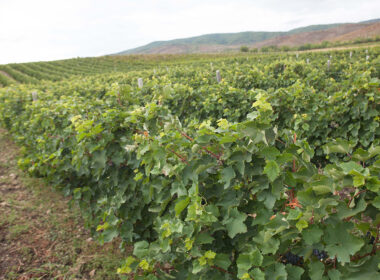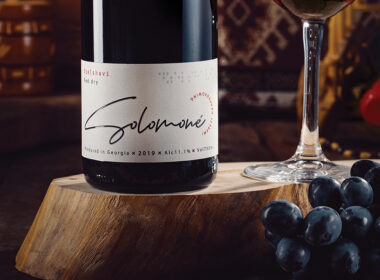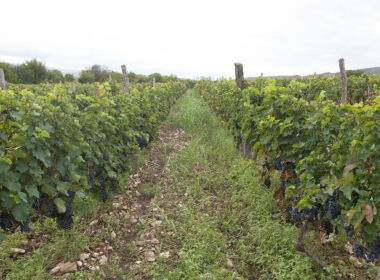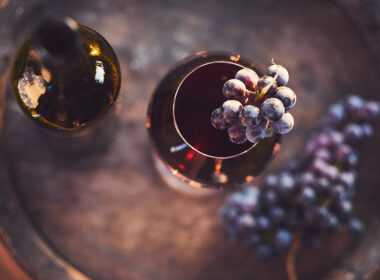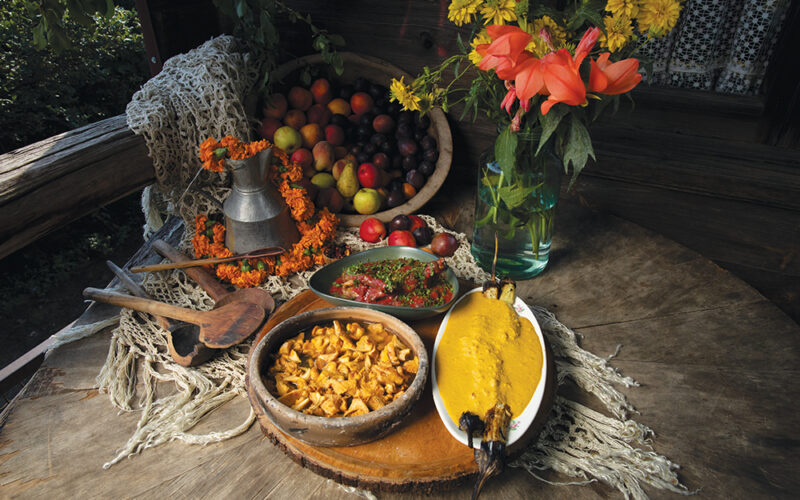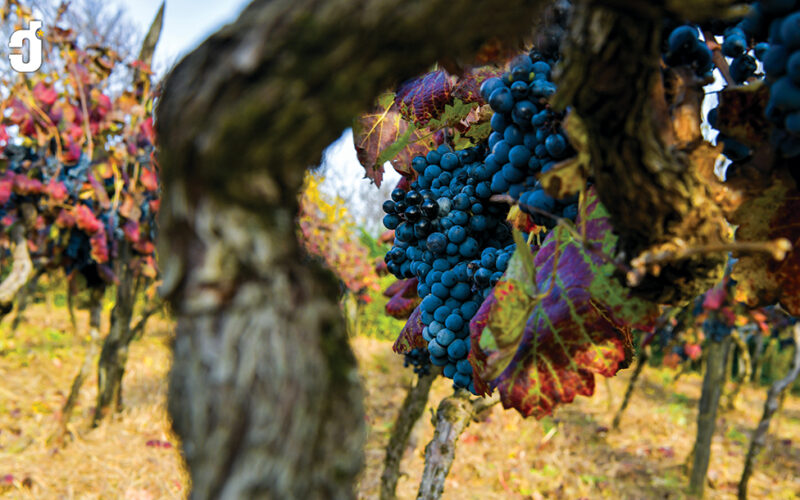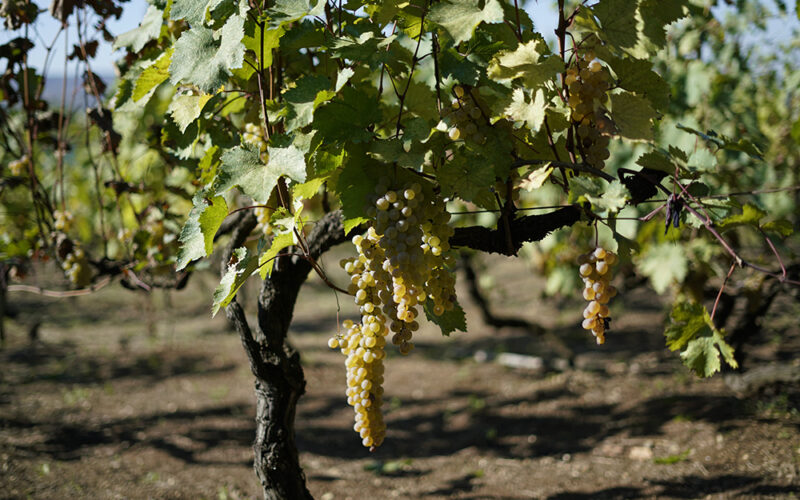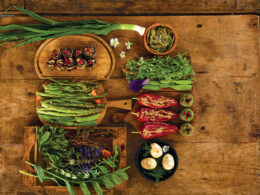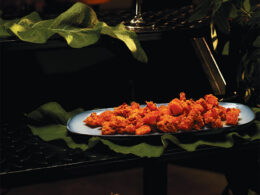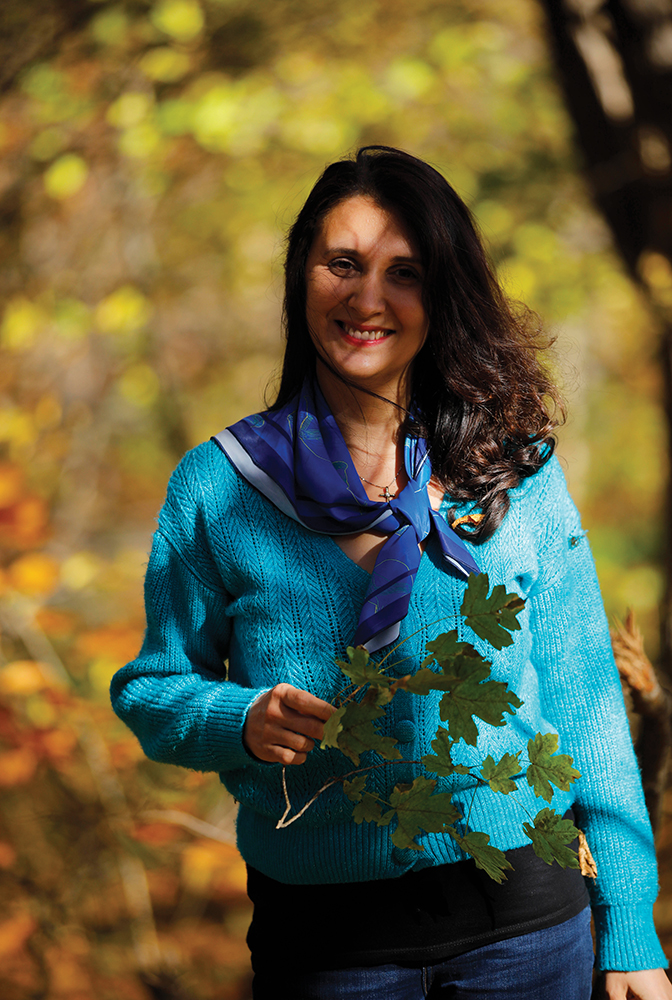
იმერეთის ისტორიულ-ეთნოგრაფიული მხარე დასავლეთ საქართველოში მდებარეობს, რომლის დედაქალაქია ქუთაისი – უძველესი ქალაქი, გაშენებული მდინარე რიონის ორივე მხარეს, გამორჩეული არქიტექტურული ძეგლებითა და ეკლესია-მონასტრებით. ეს რეგიონი განთქმულია თავისი სტუმარმასპინძლობით. მწერლები და მკვლევარები როდესაც ამ კუთხეზე იწყებენ თხრობას, მთავარ აქცენტს სწორედ მასპინძლობის ინსტიტუტზე აკეთებენ. ვიცით, რომ როგორი გაჭირვებულიც არ უნდა ყოფილიყო იმერელი მასპინძელი, სტუმრისთვის ყოველთვის ჰქონდა გადანახული საჭმელი.
ქართველების კვების რაციონში ძირითადი ადგილი ყოველთვის ეკავა პურსა და მჭადს. ამ რეგიონში ხორბალი უფრო ზემო იმერეთში ითესებოდა და მარცვლეული კულტურების დაახლოებით მესამედს იკავებდა. აქ ასევე მოჰყავდათ ქერი და ფეტვი. ხორბლის სახეობებიდან ითესებოდა დოლისპური, შავფხა, დიკა. პური იმერეთში მხოლოდ განსაკუთრებულ დღეებში ცხვებოდა, კერძოდ – დღესასწაულებზე. სანამ ამერიკიდან სიმინდი შემოვიდოდა, აქ ძირითადად ფეტვისგან ამზადებდნენ მჭადს ან ღომის (Setaria italica) ღომს მიირთმევდნენ. ამ მხარეში ყოველთვის იყო და დღესაც კარგად არის განვითარებული მხალეულის (ფხალეული) კულტურა, სოკოს მოპოვება და სოკოს შეჭამანდები, ფრინველის ხორცის კერძები, საწებლების ნაირსახეობა და რაც მთავარია, მეყველეობა – იმერული ყველი ყველასთვის კარგად ცნობილი და პოპულარულია.
სანამ კერძებზე გადავალ, მოკლედ გიამბობთ იმ პროექტის შესახებ, რომელიც DMO იმერეთმა ამ მხარის გასტრონომიის პოპულარიზაციის მიზნით დაგეგმა. პროექტი „იმერული გემო“ რეგიონის 12 მუნიციპალიტეტში კულინარიულ ექსპედიციას, კვლევას, ფოტოარქივაციასა და 12 კერძზე მოკლე ფილმების გადაღებას ისახავდა მიზნად. მასში ხუთი წამყვანი შეფ-მზარეული იყო ჩართული. „იმერულ გემოს“ გასტრონომიული ტურიზმის ბიზნეს ასოციაცია და მე, როგორც ამავე ასოციაციის ერთ-ერთი წარმომადგენელი, ვხელმძღვანელობდი.
ყველის მომზადების იმერული ტექნოლოგია და
ყველისგან მომზადებული კერძები
შევეცდები, დეტალურად აღვწერო ის კერძები, რომლებიც მოვამზადეთ. დავიწყოთ იმერული ყველით. ეს არის პროდუქტი, რომელშიც მთავარი მისი ადგილწარმოშობაა. აქაური ბალახი, ჰაერი თუ საკვები განსაკუთრებულ გემოვნურ თვისებებს სძენს რძეს, რომელსაც ახლადმოწველილს ოდნავ შეათბობენ, შემდეგ მაჭიკს (იგივე კვეთს) ჩაასხამენ და დაელოდებიან ნელ-ნელა როგორ აიჭრება და დაიწყებს შესქელებას. მაჭიკი ღორის, ხბოს, ან ქათმის კუჭისგან მზადდება. მას იმერეთში ნებისმიერი დიასახლი ინდივიდუალურად ამზადებს. მაჭიკით ამოყვანილი ყველი სულ სხვა გემოთი ხასიათდება. მას შემდეგ, რაც რძე გასქელდება, ხელით ერთად შეაგროვებენ, ბურთის ფორმას მიცემენ და სპეციალურ სუთში (საწურში) ჩადებენ; მხოლოდ მეორე დღეს მოაყრიან მარილს, მესამე დღეს კი ყველი მზად არის წათხში ჩასადებად. სოფელ ხანში, რომელიც ბაღდათში მდებარეობს, დღესაც აქვთ სპეციალური ჭურები, რომლებშიც ყველს ინახავენ; ხარაგაულში, წათხში შენახულ ყველს ზამთრის ყველს ეძახიან, ხოლო სოფელ საზანოს ყველი დღესაც ერთ-ერთი პოპულარული პროდუქტია.
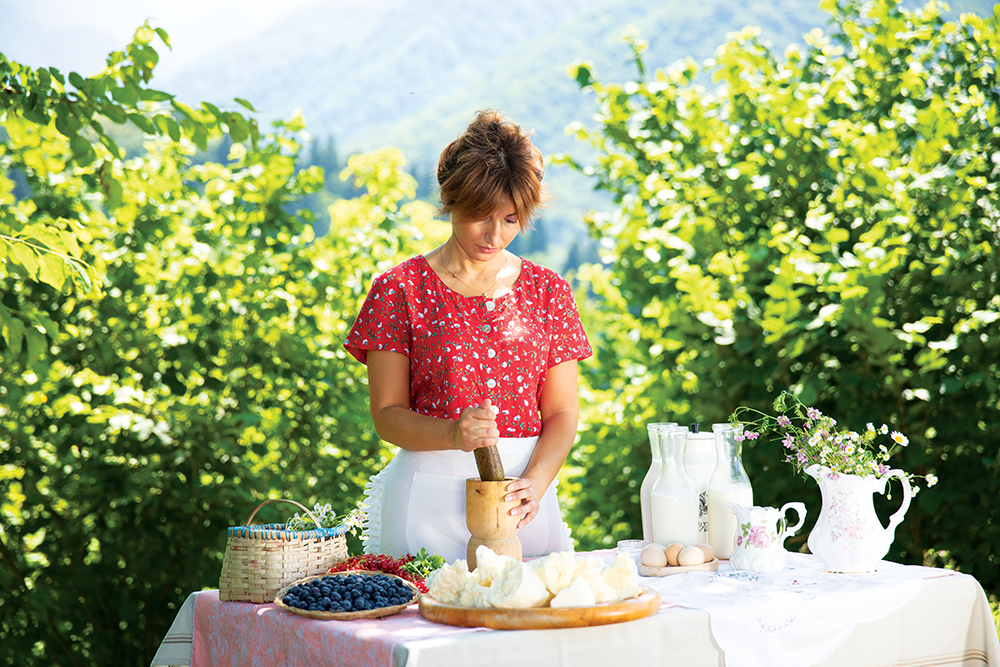

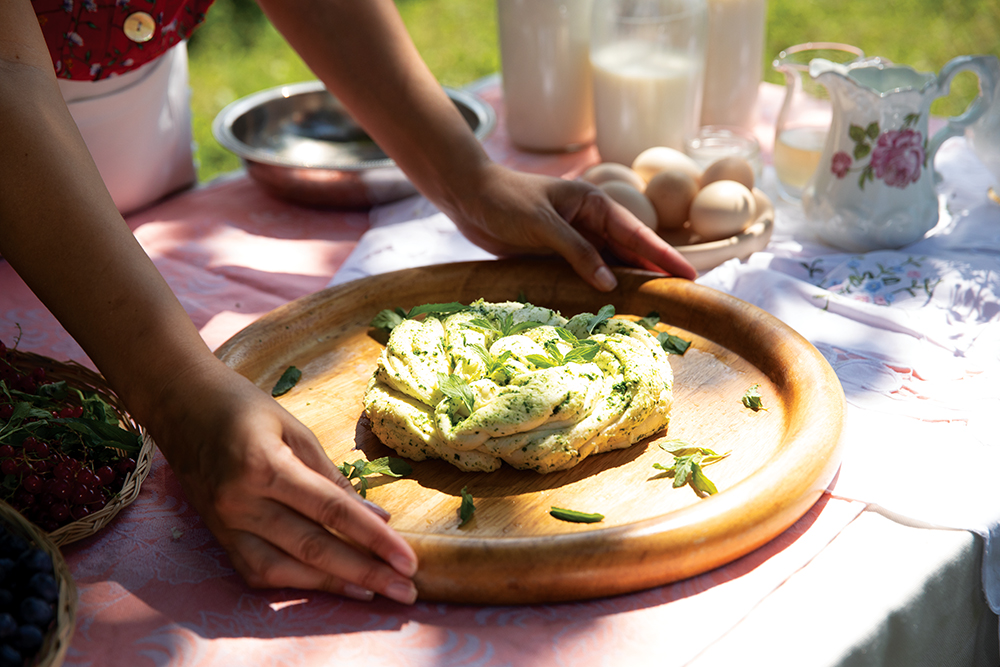
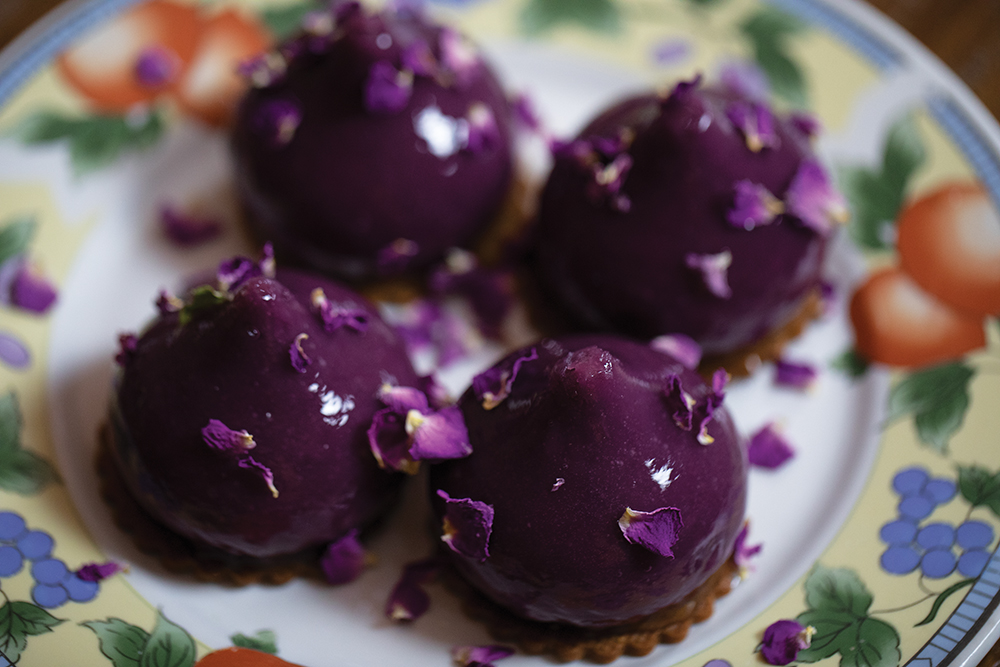
შეფ-კონდიტერმა ხათუნა ბაკურაძემ ყველის ამოყვანის მასტერკლასის შემდეგ, გადაზელილი ყველი მოგვიმზადა: მეორე დღის აფუებული ყველი რძეში მოხარშა, გობზე ამოიღო და დანაყილი პიტნა შეაზილა, შემდეგ კონდიტერის გაწაფული ხელით ლამაზად დაწნა და პიტნის ფოთლებით გააფორმა. ხათუნამ მოგვიმზადა იმერული ნუგბარიც – ჩურჩხელა და ფელამუში – ადესის წვენისგან და მჭადის ფქვილისგან, რომელსაც ზემოდან კარამელიზებული ნიგოზი მოაყარა.
ყველისგან მზადება იმერეთის ნამდვილი სიამაყე – ხაჭაპური, რომელიც შეფმა ავთანდილ ცეცხლაძემ კეცებზე გამოგვიცხო. ზემო იმერეთში ყველს არა მარტო წათხში დებენ, არამედ მზეზეც ახმობენ. ასე ყველი კარგად ინახება. მას არა მხოლოდ გამხმარს მიირთმევენ, არამედ ადუღებულ წყალსაც დაასხმენ ხოლმე. ამზადებენ გემრიელ წვნიანსაც: გამხმარ ყველს დაალბობენ, მოხარშულ ბრინჯს გაურევენ და მწვანილით შეკმაზავენ.
აქვე გეტყვით, რომ ბრინჯის კულტურა კარგად იყო განვითარებული როგორც იმერეთში, ისე გურიასა და აჭარაში. ბრინჯის ტკბილი ფლავი ის სარიტულო კერძია, რომელიც იმერეთში დღემდეა შემორჩენილი.
სხვადასხვა სატენით მომზადებული კერძები და საწებლები
იმერეთში ვხვდებით კიდევ ერთ საინტერესო საახალწლო კერძს – „ხაციცს“ (ბრინჯითა და ყველით გამოტენილი მოხარშული ქათამი ან ბატი). /შობის წინა საღამოს ოჯახის თითოეული წევრისთვის კლავენ ქათმებს და კუჭმაჭის მაგიერ ურთავენ ჭყინტ ყველსა და მოხარშულ ბრინჯს; შობის გათენებამდე ყველანი სუფრას მიუსხდებიან და ლოცვის შემდეგ საუზმობენ, რომელსაც ხაციცი ჰქვია. ვუკოლ ბერიძე, „სიტყვის კონა იმერულ და რაჭულ თქმათა“/
ფრინველის ან ცხოველის სხვადასხვა სატენით მომზადების ტრადიცია ამ მხარეში კარგად იყო დამკვიდრებული. ამას მოწმობს აკაკი წერეთლის მენიუში მოხსენიებული „გოჭი შინდის ჩურჩით“. როგორც საჩხერეში მოგვიყვნენ, გოჭს ყველით, ბრინჯით, ნიგვზით, შინდის ჩურჩით და ზოგჯერ გოჭისვე გულ-ღვიძლით გამოტენიდნენ და ისე წვავდნენ თონეში. ამ კერძის მომზადება შეფმა ირაკლი ასათიანმა ითავა. ირაკლი წარმოშობით ქუთაისიდანაა და კარგად იცის აქაური სუფრის ფასი.
შებრაწული გოჭი იმერული სუფრის ისეთივე მშვენებაა, როგორიც კალმახი ბროწეულის სოუსით, მოხარშული ხბოს ბეჭი ნივრის სოუსით ანდა კეცზე შემწვარი წიწილის ტაბაკა სხვადასხვა სახის სოუსით – ისრიმით და მაყვლით, ბაჟეთი, ბჟიტი ტყემლის სოუსით, კვაწარახის სოუსით, ნიორ-წყლით და სხვა. ირაკლიმ გოჭი ნამდვილი იმერული რეცეპტით მოამზადა: დაკეპილი გულ-ღვიძლით, ყველით, ჩირითა და სხვადასხვა მწვანილით გამოტენა და ისე შეწვა თონეში. არც რიონში თევზის დაჭერა დაზარებია, რომელიც ბროწეულის წვენში დაამარინადა და კაკლის ფოთლებში შეწვა.
სოკოსგან მომზადებული კერძები
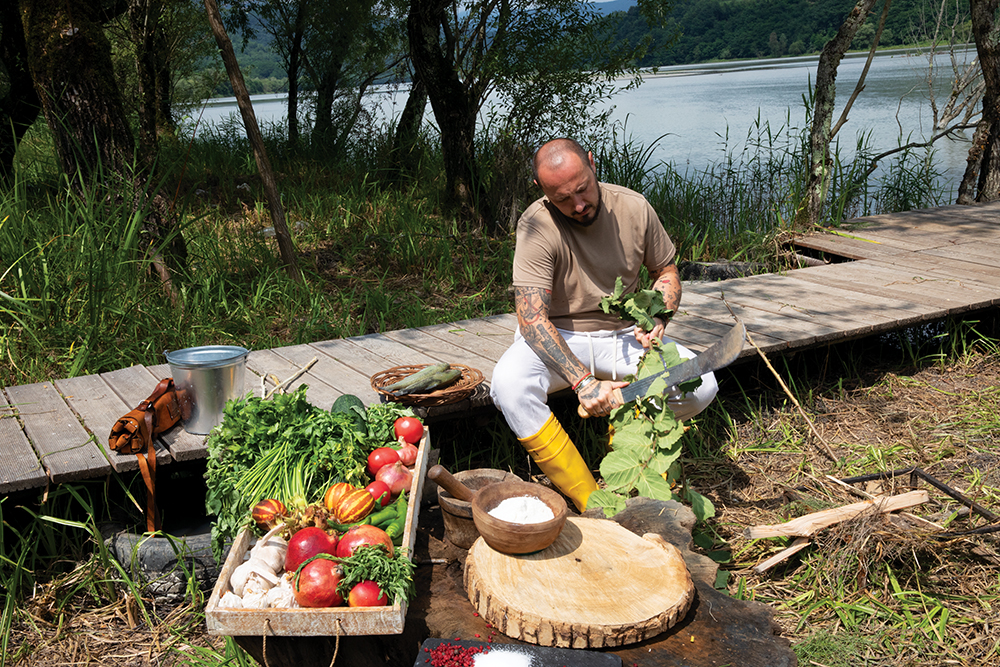
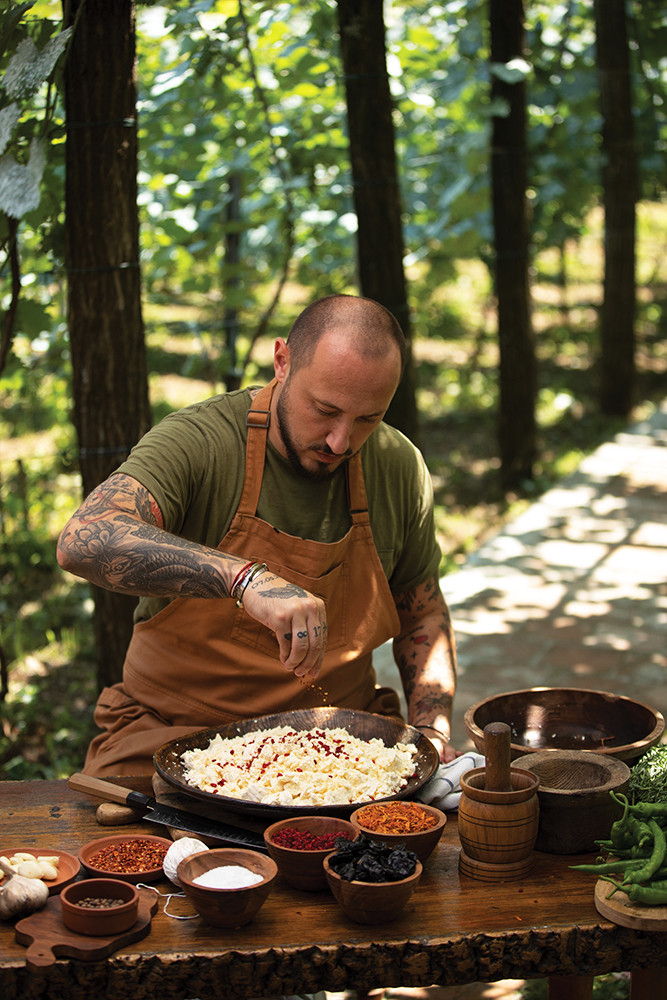
იმერულ სუფრას ყოველთვის ამშვენებს სოკოსგან მომზადებული სეზონური კერძები: ივლისის ბოლოსკენ – მიქლიო, აგვისტოში – ნიყვი, დათვა, მჭადა, ზამთარში კი დამარინადებული მანჭკვალა. ნიყვს მსოფლიოში სამეფო სოკოდ იცნობენ. ეს მართლაც მეფური სოკო მხოლოდ მარილის მოყრას ითხოვს და ისე შეწვას. სამწუხაროდ, გასული წლის ზაფხულში წვიმები არ იყო, ამიტომაც ნიყვი მხოლოდ გვიან შემოდგომაზე გამოჩდა და ისიც აქა-იქ. სამაგიეროდ, არანაკლებ მეფური მიქლიო იყო ბლომად იმერეთის ტყეებში, რომელიც შეფმა ავთანდილ ცეცხლაძემ მწყერთან ერთად მოგვიმზადა: ერთ კეცზე კარაქში ხახვთან ერთად შეწვა სოკო, მეორეში კი მწყერი დანაყილ ქინძთან და ნიორთან ერთად შებრაწა.
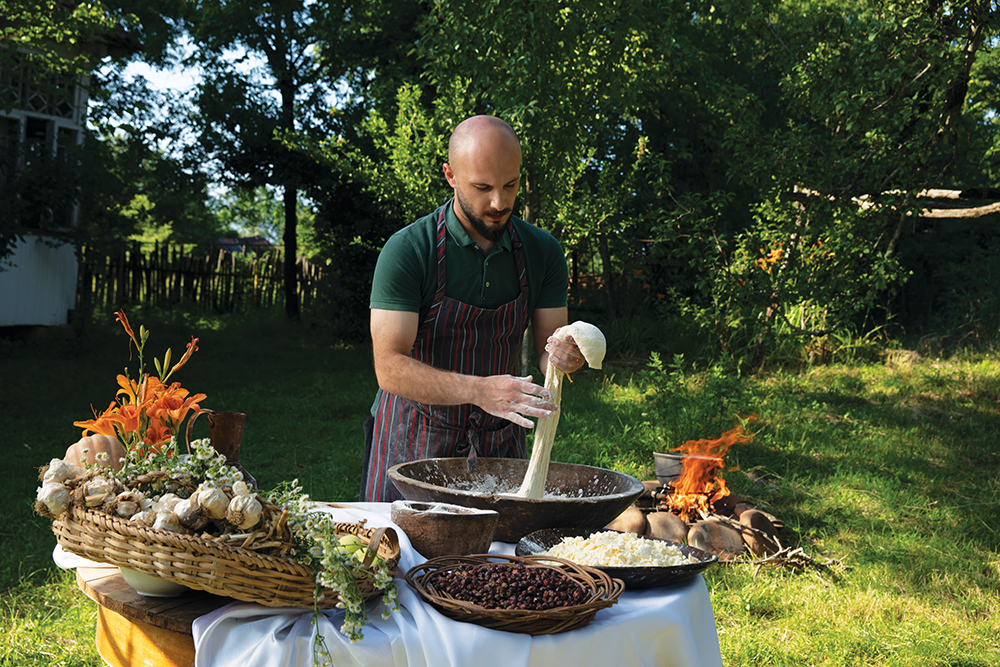
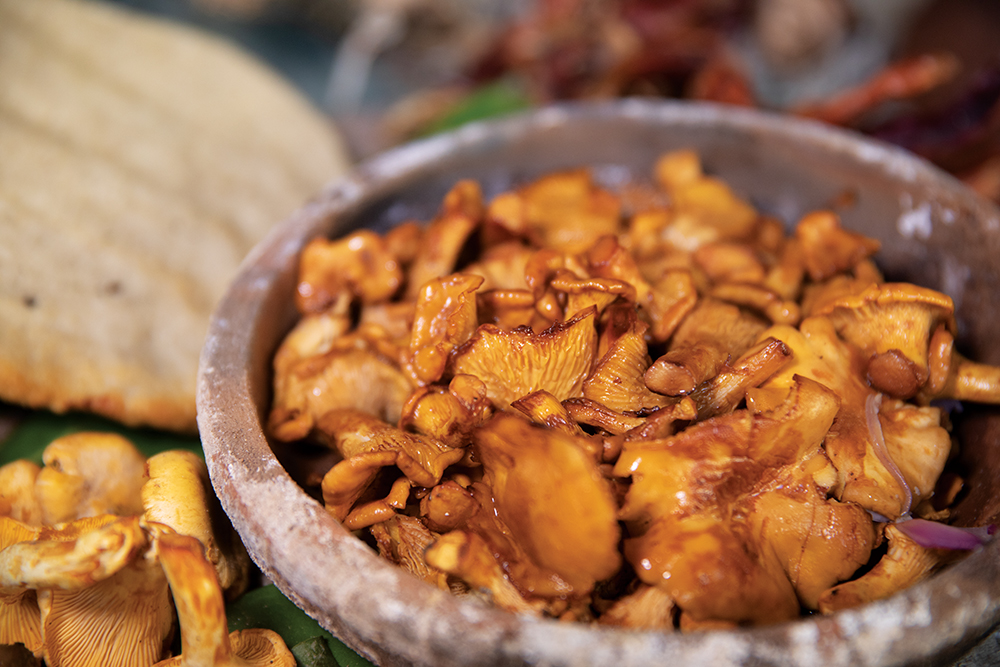
წიწილი ისრიმ-მაყვალში ნიკო ნიკოლაძის სახლ-მუზეუმში მოვამზადეთ. ევროპელი არქიტექტორების მიერ შექმნილი ნიკოლაძის კარ-მიდამო და მამულები ზუსტად ასახავს იმ დროის დიდი მეცენატის ყოფა-ცხოვრებას – თვალწინ გვიდგება ულამაზეს ბაღში და ფანჩატურებში, ფაიფურის ჭურჭელზე როგორ მიირთმევდნენ იმერული და ევროპული რეცეპტებით მომზადებულ კერძებს. როგორც მუზეუმში გვითხრეს, ნიკოს ძალიან ჰყვარებია არტიშოკი და მისგან თავადაც ხშირად ამზადებდა კერძს.
ამ ლოკაციისთვის შეფი დავით ნარიმანიშვილი განზრახ შეირჩა. მას განათლება ბასკეთის კულინარიულ ცენტრში აქვს მიღებული, თანამედროვე ტექნიკებსა და გამოცდილებას ხშირად უზიარებს ქართველ შეფებს და ქართული გასტრონომიის განვითარებაშიც შეაქვს თავისი წვლილი.
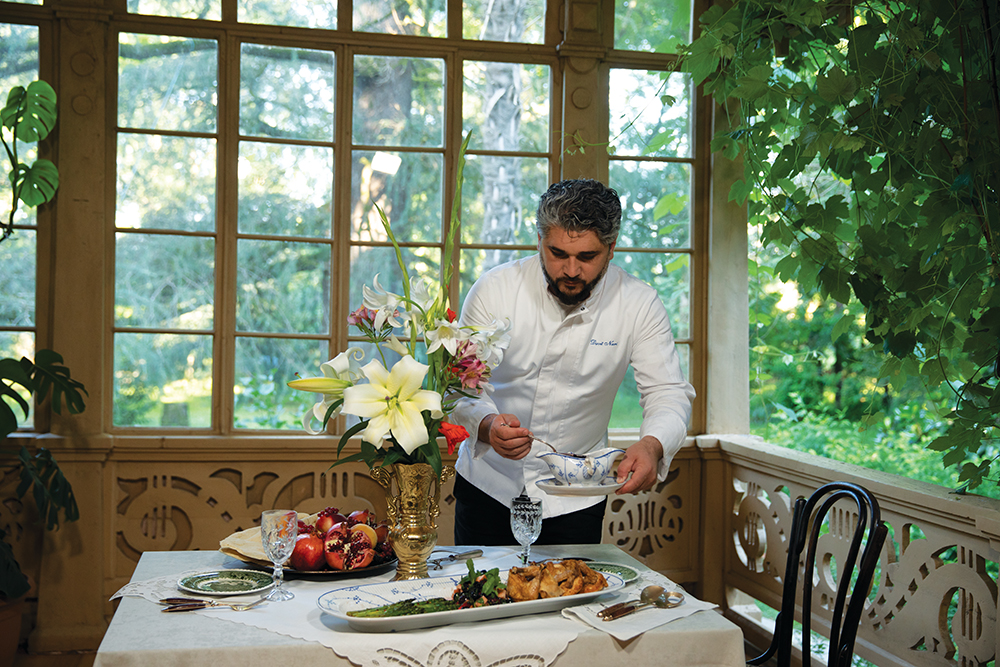

დავითმა წიწილი ისრიმ-მაყვალში ტრადიციული წესით მოამზადა და ევროპული შტრიხებიც დაურთო. ისრიმ-მაყვლის საწებელი სეზონურად მზადდება: მაყვალი კარგად რომ დამწიფდება, ყურძენი კი ჯერ კიდევ მკვახეა, მათგან წვენს გამოწურავენ, ნიორს, ქინძს, ქონდარს, წიწაკას შეურევენ და კეცზე შემწვარ წიწილს ზემოდან მოასხამენ. მაყვლისა და ისრიმის ოდნავ მოტკბო-მომჟავო გემოები კერძს პიკანტურობას სძენს.
დავითს ტყემლის საწებლისა და კუპატის მომზადებაც დაევალა. ტყემლის საწებელი არა მხოლოდ იმერეთის, არამედ მთელი საქართველოს სავიზიტო ბარათი და ყველა კუთხის სუფრის მშვენებაა. მასში ყველა დიასახლისი თავისებურ შტრიხს აქსოვს, თუმცა მთავარი ინგრედიენტები – ტყემალი, წიწაკა, ქინძი, ნიორი – უცვლელი რჩება, დანარჩენი კი სეზონისა და გემოვნების მიხედვით ემატება (ომბალო, ცერეცო, კამა, პიტნა და სხვა).
იმერული მხალეული
იმერული სუფრა წარმოუდგენელია მხალეულის (ფხალეულის – როგორც იმერლები უწოდებენ) გარეშე. აქაურები წყალში მოწალავენ ხოლმე მინიმუმ რვა სახეობის მხალს: ჯიჯილაყა, იაია, ჩიტისთვალა, თიკნიყურა, მოლოქა, ქათამნაცარა, ჭლაკვი და სხვა და სხვა. მოწალულ მხალს ხის გობში მოათავსებენ და ხისავე სპეციალური ჯოხებით დაკეპავენ. შემდეგ დანაყილი ნიგვზით, წიწაკითა და მარილით შეაზავებენ და წვნიან მასას კეცზე გამომცხვარ მჭადთან ერთად მიირთმევენ.
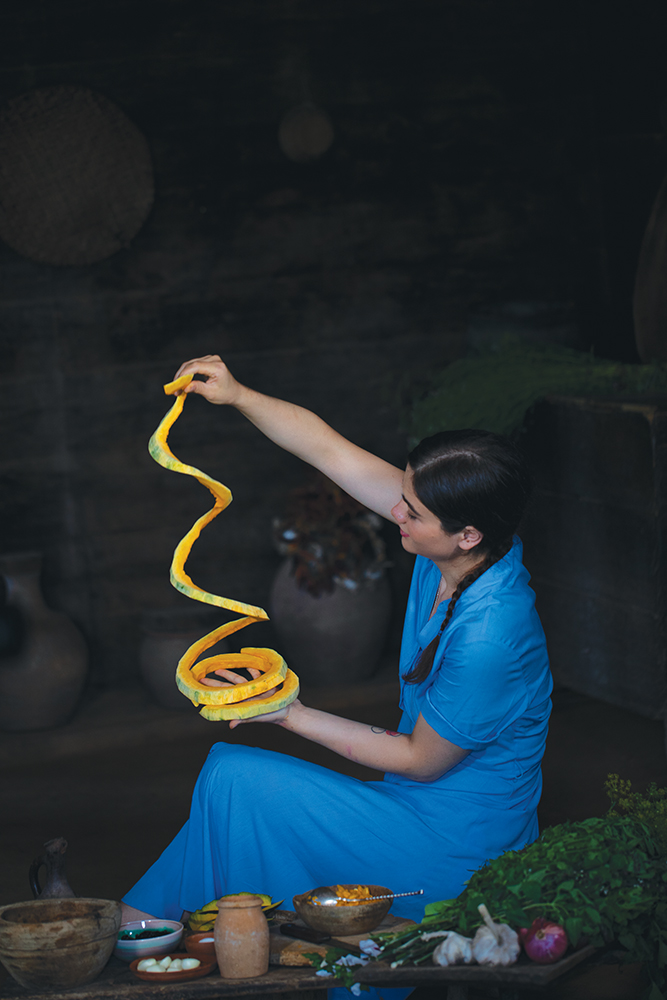
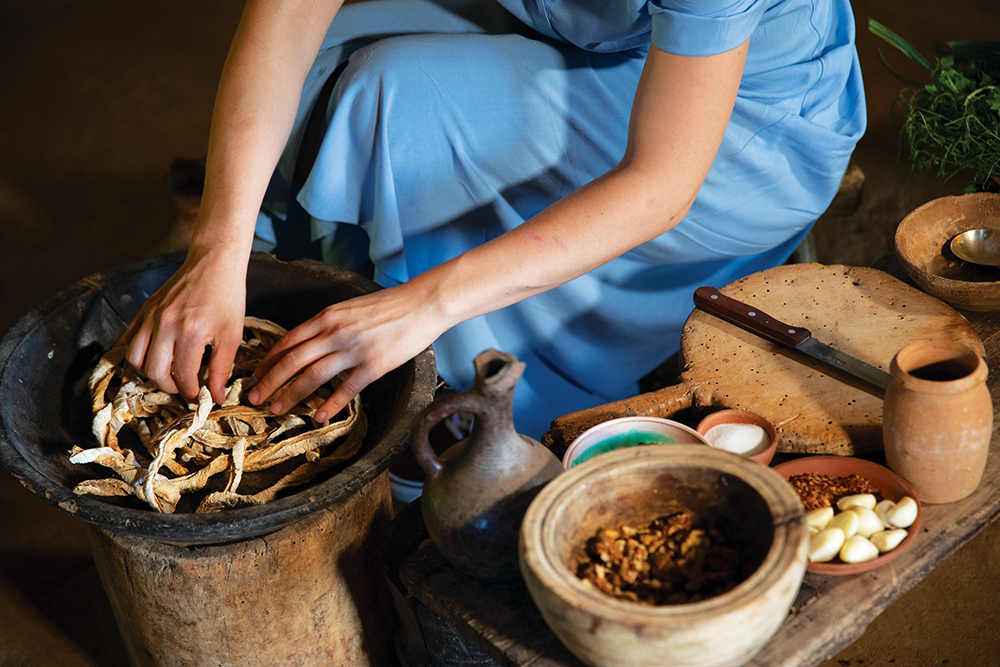
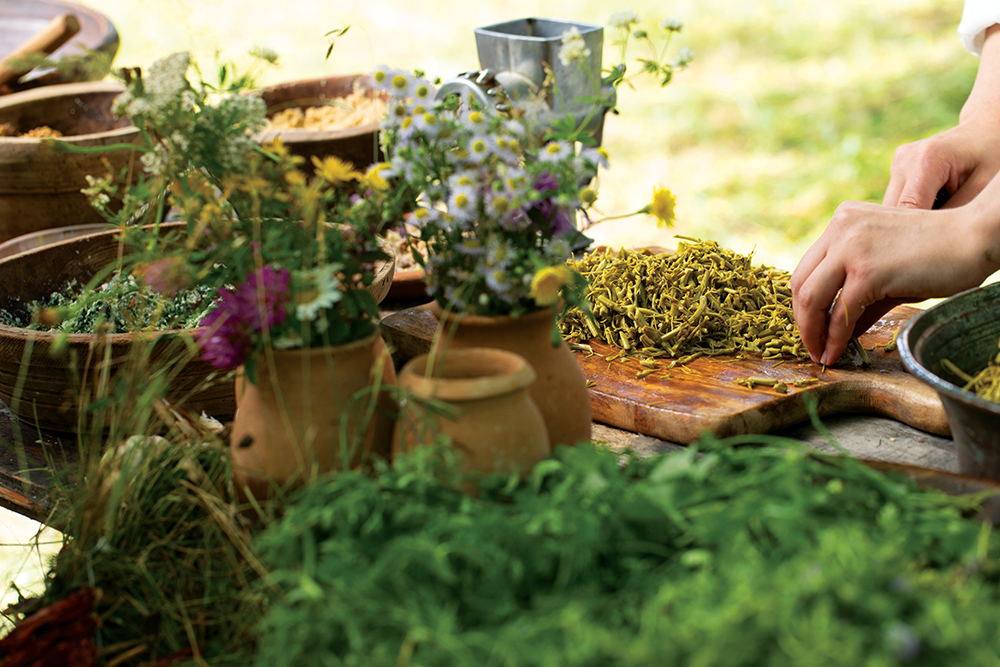
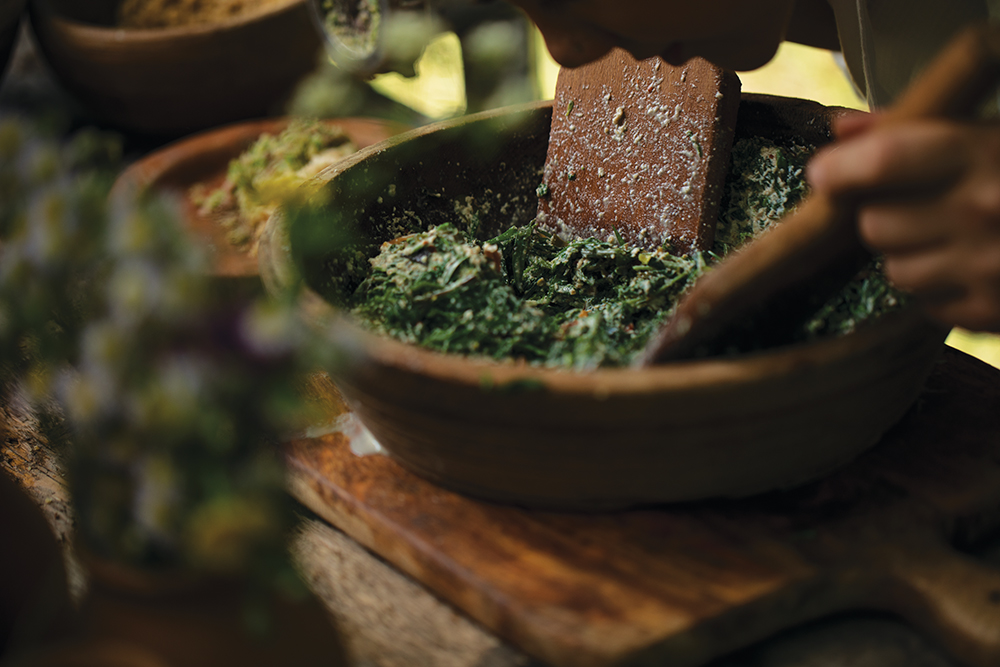
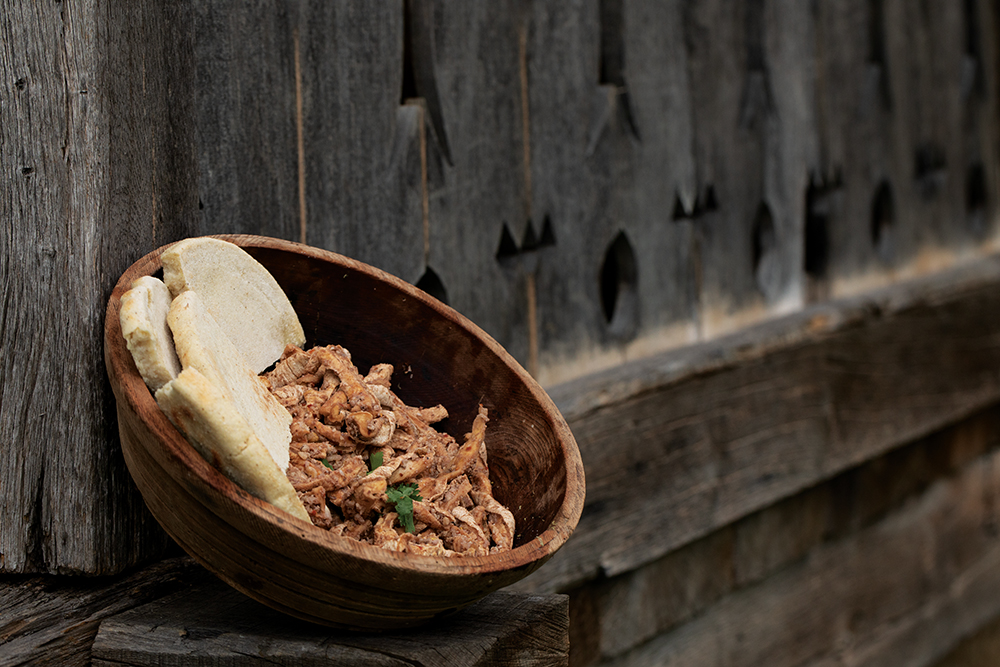
შეფმა ნინო ვარშანიძემ აკაკი წერეთლის სახლ-მუზეუმში და ძიძისეულ სახლში ლობიო და კვახის ფხალი „კვახიწელა“ მოგვიმზადა. კვახიწელა რაჭის და ზემო იმერეთის მივიწყებული კერძია, რომელიც საინტერესო ტექნოლოგიით მზადდება: გოგრას მრგვალად შემოჭრიან, ხის ჯოხებზე გაკიდებენ და მზეზე გამოაშრობენ, რის შემდეგაც ზამთრისთვის შეინახავენ მშრალ ადგილას. მომზადების წინ დაალბობენ თბილ წყალში, ან წამოადუღებენ, შემდეგ კი ნივრით, სუნელებით და კოწახურით შეაზავებენ.
ცალკე აღნიშვნის ღირსია პრასი, ეკალა ფხალი, კანა ფხალი, ჩიტისთავა და სხვა ფხალეულობა, რომლითაც თავს ასე იწონებს იმერული სუფრა. აქაურ ცინცხალ ღვინოებს – ციცქას, ცოლიკოურს, კრახუნასა და ოცხანური საფერეს ყველა ზემოჩამოთვლილი კერძი ძალიან კარგად ეხამება.
/იმერულ გასტრონომიაზე შეგიძლიათ ასევე წაიკითხოთ სტატია „კოლხი მედეას ნაკვალევზე“/
ALL YOU NEED TO KNOW ABOUT THE TASTES OF IMERETI
By Keti Kvichidze
The historical-ethnographic area of Imereti is located in Western Georgia. The capital of the region is Kutaisi – an ancient city, built on both sides of the Rioni river, with outstanding architectural monuments, churches, and monasteries. This region is famous for its hospitality. When writers and researchers describe this region, hospitality is their main focus. We know that no matter how poor the Imeretian host was, he always had food prepared for his guests.
One of the main components of the Georgian diet has always been bread and mchadi (cornbread). Wheat was mainly grown in Zemo Imereti (Upper Imereti) and occupied about a third of the total crops. Locals also grew barley and millet. Some of the varieties of wheat were Dolispuri, Shavphkha, Dika. Bread in Imereti was only baked on special occasions, mainly during holidays. Before the introduction of corn from America, locals made mchadi from millet or ate ghomi (Setaria italica). Vegetable pâtés, mushrooms, poultry dishes, sauces, and cheese-making always made up the fabric of this region – after all Imeretian cheese is one of the most popular varieties throughout Georgia.
Before I go on to talk about the dishes, I want to briefly mention a project that DMO Imereti planned to promote the gastronomy of the region. The goal of the “Imeretian Taste” project was to organize culinary expeditions in 12 municipalities of the region, photo-document, and make 12 short films about 12 dishes of the region. The project involved five leading chefs and was led by the Gastronomic Tourism Business Association and me, as one of the members of the same association.
Imeretian cheese-making technologies and cheese dishes
I will now try to describe all of the dishes that we made. Let’s start with Imeretian cheese. The place of origin plays a vital role in this product. Local grass, air, and feed give a special taste to milk, which is warmed up straight after milking, adding a bit of rennet. After some time the liquid will start turning and thickening. Rennet is typically obtained from the stomach of a pig, calf, or chicken. Each household in Imereti makes a rennet. Cheese made with it tastes completely different. After the milk is thick and chunky enough, the pieces are put together in a shape of a ball and put into a sieve. It is only salted on the second day, and by the third – it is ready to be put into the brine. In the village of Khani, which is located in Baghdati, they still have special churi to store cheese; In Kharagauli, the cheese stored in the brine is called winter cheese, and the cheese of Sazano village is still one of the popular products today.

After a cheese-making masterclass, chef Khatuna Bakuradze made us melted cheese in a pan: she boiled the second-day cheese, put it in a wooden bowl, and added mint. She then kneaded it beautifully and garnished it with mint leaves. Khatuna also made Imeretian sweets – churchkhela and phelamushi – from Odessa grape juice and corn flour, sprinkling caramelized walnut on top.
Cheese is also the main ingredient of Khachapuri – a true source of pride for Imereti. Chef Avtandil Tsetskhladze baked it on a clay pan (ketsi). Apart from putting the cheese in brine, the inhabitants of Zemo Imereti frequently dry it in the Sun. This preserves the cheese better. Locals eat it dry but also add boiling water to it. A delicious soup can also be made from cheese: dried cheese is first softened with water, adding cooked rice and herbs.
Rice culture was well developed in Imereti, Guria, and Adjara. Sweet rice porridge is a traditional dish that is still cooked in Imereti.
Sauces and various dishes made with stuffing
There is a New Year dish that you can find in Imereti. It is called Khatsitsi (Boiled duck or chicken stuffed with rice and cheese). /On Christmas Eve, each member of the family gets a chicken that is stuffed with fresh cheese and cooked rice. Before Christmas day dawn, everyone sits at the table and has breakfast after saying grace. The dish served is called Khatsitsi. Vukol Beridze, “A glossary of the Georgian dialects of Imereti and Racha”/
The stuffing was a staple in this region. A menu made for Akaki Tsereteli mentions a suckling pig stuffed with cornel. As we were told in Sachkhere, the piglet would be stuffed with cheese, rice, walnuts, and cornels, and roasted in tone. Chef Irakli Asatiani took it upon himself to make this dish. He is from Kutaisi and knows the importance of local Supra.

Imeretian Supra is filled with delicious dishes such as roasted suckling pig, trout with pomegranate sauce, boiled beef shoulder with garlic sauce, and fried chicken with various sauces – grape and blackberry, bazhe, unripe tkemali, gooseberry, garlic water, and others. Irakli prepared the whole pig using a traditional Imeretian recipe – stuffed it with minced innards, cheese, dried fruits, and various herbs and roasted it in tone. He fished fresh trout from the Rioni river, marinated it in pomegranate sauce, and fried it with walnut leaves.

Mushroom dishes
Mushroom dishes are also quite common in Imereti. They differ seasonally, with chanterelles at the end of July, Caesar’s mushroom, porcini, and red pine in August, and marinated honey fungus in the winter. Ceasar’s mushroom is truly royal. The only thing it requires is salt and a hot pan. There was unfortunately little to no rain during last summer, and Caesar’s mushroom only appeared scarcely at the end of Autumn. Fortunately, Imeretian forests were filled with chanterelle, which Chef Avtandil Tsetskhladze cooked with quail: he fried the mushrooms on a clay pan (ketsi) with butter, and pan-fried the quail with crushed coriander and garlic.
We chose Niko Nikoladze’s house museum as our next destination. Designed by European architects, this estate accurately depicts the life of the great patron of arts – one can only imagine the dinners held in the beautiful garden, or the summer house, tables set with fine porcelain. According to museum sources, Niko loved artichoke and cooked it quite frequently.
Chef Davit Narimanishvili was deliberately chosen for this location. He studied at the Basque Culinary Center, where he learned modern culinary techniques, which he now shares with Georgian chefs and contributes greatly to the development of Georgian gastronomy.

Davit cooked a whole chicken in unripe grape and blackberry using a traditional recipe and embellished it with European elements. The time has to be right to make the sauce: blackberries need to be ripe unlike the grape. They are both pressed, extracting the juices, which are then mixed with garlic, coriander, savory, and pepper. This mixture is poured over the pan-fried chicken. The sweet-sour taste of the sauce adds a bit of zest to the dish.
Davit was also charged with making tkemali sauce and meat sausage (kupati). Tkemali is a purely Georgian sauce. It can be found on every table throughout the country. Each household makes it in its way, but the main ingredients stay the same – tkemali, pepper, coriander, garlic, the rest is added according to the season and personal preference (penny-royal, fennel, dill, mint, etc.)
Imeretian vegetable pâté (mkhali)
Imeretian Supra is unimaginable without mkhaleuli (or pkhaleuli – as the Imeretians call it). Locals blanche a few of the leafy vegetables together – amaranth, woodruff, Stachys, mallow, spring onion, and many more. The blanched leaves are then placed in a wooden bowl and pressed with a special wooden spoon. The pâté is mixed with crushed walnuts, pepper, and salt and eaten with mchadi baked on a clay pan.

Chef Nino Varshanidze made lobio (beans) and pumpkin phkhali (pâté) called kvakhitsela in Akaki Tsereteli’s house museum. Khvakhitsela is a forgotten dish from Racha and Zemo Imereti. Pumpkin is first cut up in a round shape, put on wooden skewers, dried in the sun, and stored for winter in a dry place. Before cooking, it is soaked in warm water or boiled and mixed with garlic, spices, and barberry.
Other vegetable phkhali worth mentioning are leek, smilax, canna, and woodruff. They are a true jewel of Imeretian Supra. Local crisp wines Tsitska, Tsolikouri, Krakhuna, and Otskhanuri Sapere all pair well with the above-mentioned dishes.
/You can also read the article “Following the steps of Medea of Colchi” on Imeretian Gastronomy, which is available on the magazine’s website nlinemedia.co.uk/

